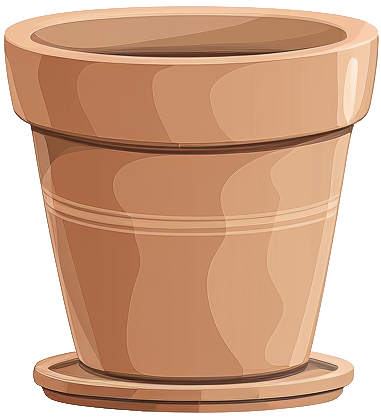- monstera
- deliciosa

monstera
deliciosa
deliciosa
Care level
Easy
Popularity
Star
As this tropical beauty matures, its leaves develop dramatic splits and holes called fenestrations, creating an instantly recognizable silhouette. In its native habitat, it can produce edible fruit that tastes like a blend of banana and pineapple, which is why it's nicknamed the 'fruit salad plant'.
Care & maintenance
Light
Bright light, usually located near windows but doesn't receive direct rays for more than an hour during the day.
Temperature
Wide range (59°F - 86°F)
Fertilization frequency
Moderate
Monthly during the growing period.
Soil
Choose a Tropical plant mix: A rich, moisture-retentive blend with good aeration. Mimics the natural forest floor environment of tropical regions.
If you want to create your own substrate, you can make a mixture of the following soils:








Click on the soil name for more information.
Pot

Standard size
Prefer a pot with a classic width/depth ratio.
Incorrect or incomplete information?
In our goal of building the best plant database, we sometimes make mistakes or have incomplete information. You can help us fill these gaps!
Features
Size & growth
Very large
Climbing
Rapid growth
This plant grows rapidly. It can reach over 6 feet in height or spread.
It grows upwards by attaching to supports or winding around them.
Toxicity
| Cat | |||
|---|---|---|---|
| Dog | |||
| Human |
Reproduction & propagation
Fruits & flowers
Flowering & not self-pollinating
The monstera deliciosa can produce flowers and therefore fruits.
This plant is not capable of self-pollination, it will not be able to produce fruits if it is not pollinated by another individual.
Propagation methods
Featured plants

monsteradeliciosa 'Albo'

monsteradeliciosa 'Aurea'

monsteradeliciosa 'Bulbasaur'

monsteradeliciosa 'Creme brulee'

monsteradeliciosa 'Devil monster'

monsteradeliciosa 'Green snow'

monsteradeliciosa 'Jungle mint'

monsteradeliciosa 'Mint'

monsteradeliciosa 'Sierrana'

monsteradeliciosa 'Sumi'

monsteradeliciosa 'Thai constellation'

monsteradeliciosa 'White monster'

